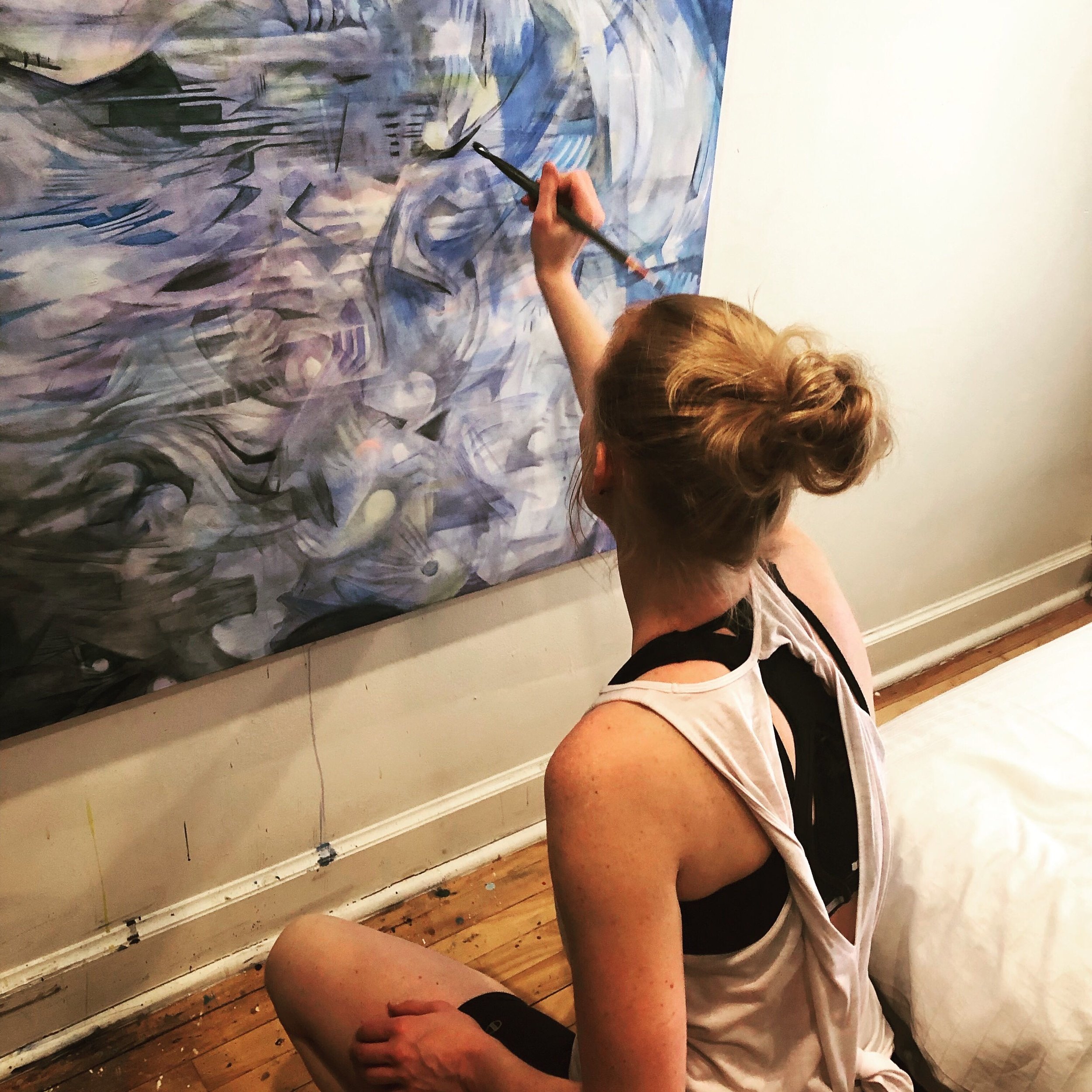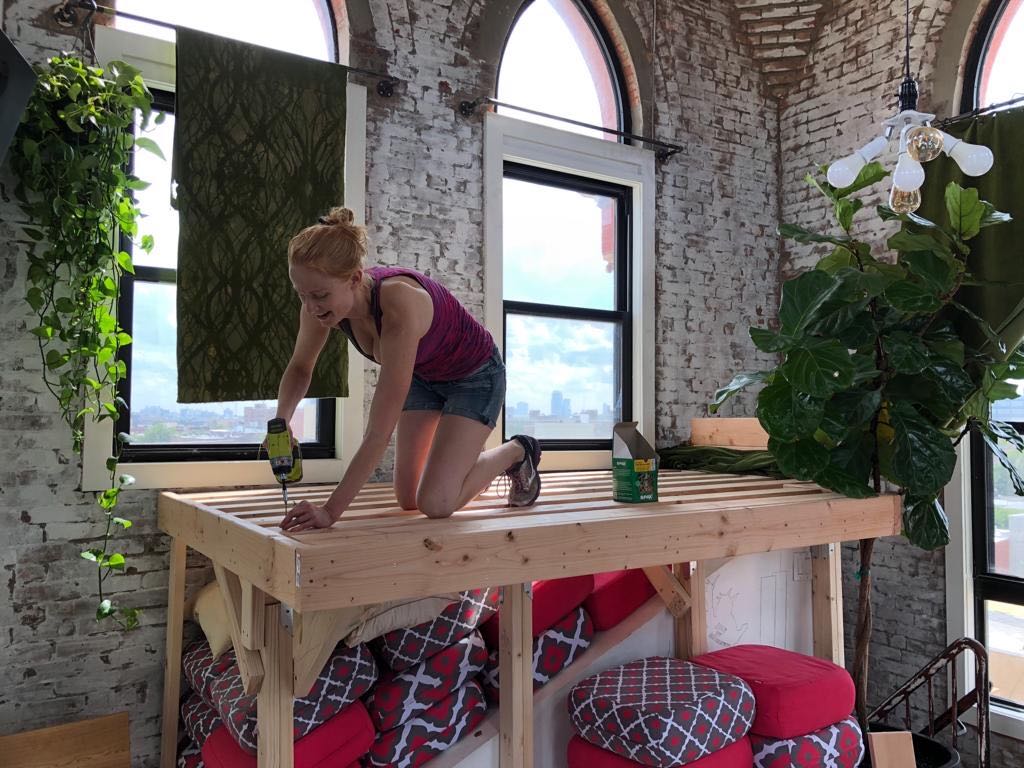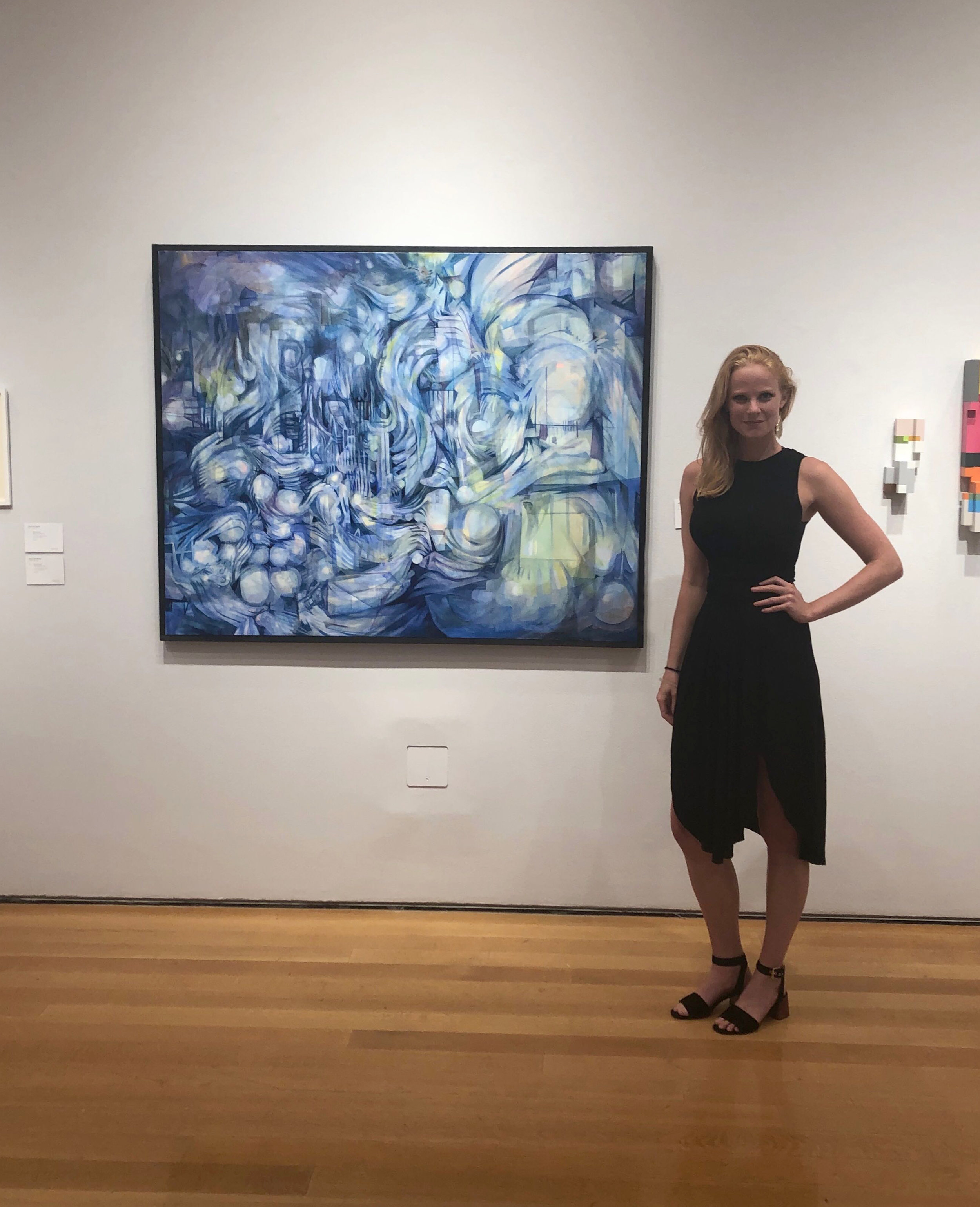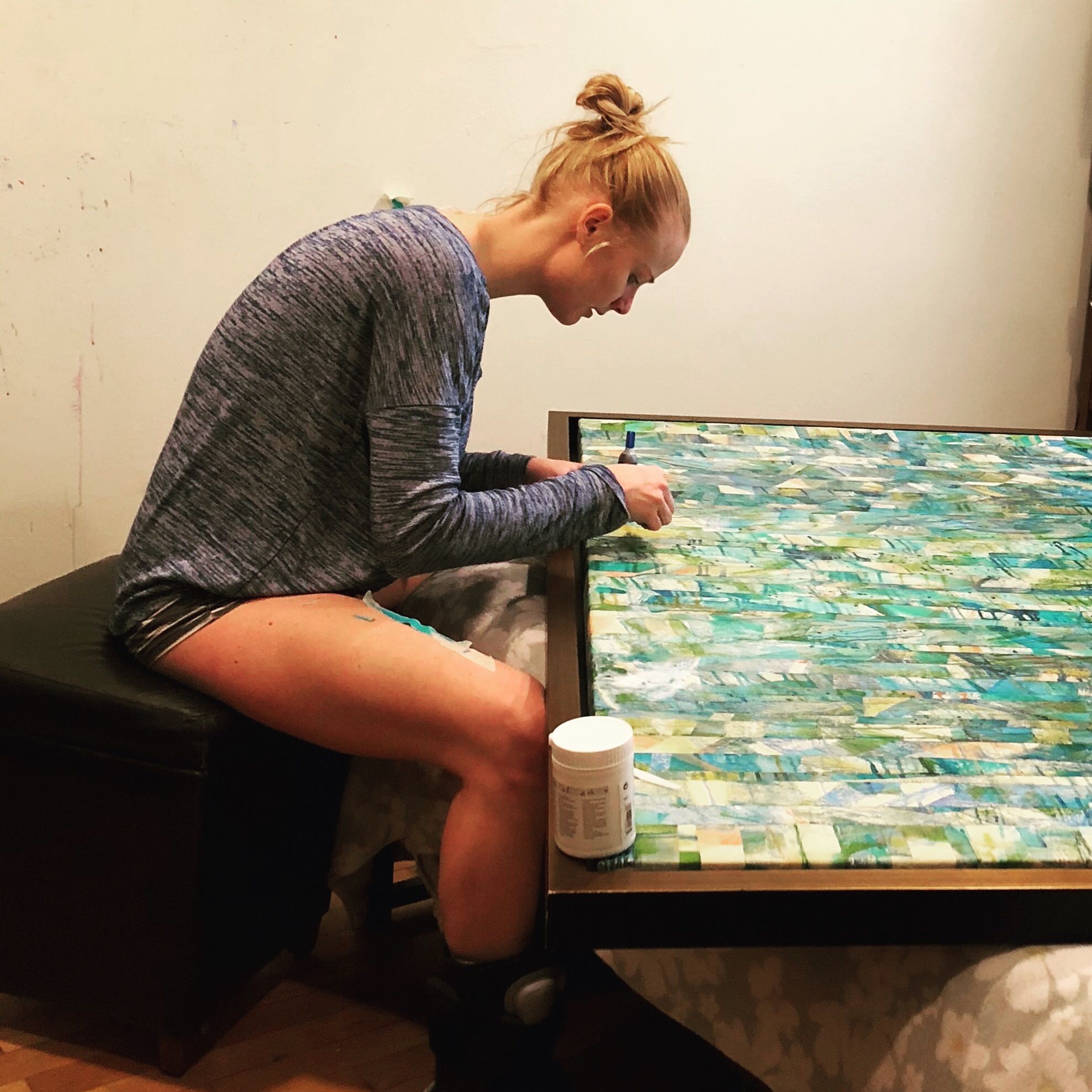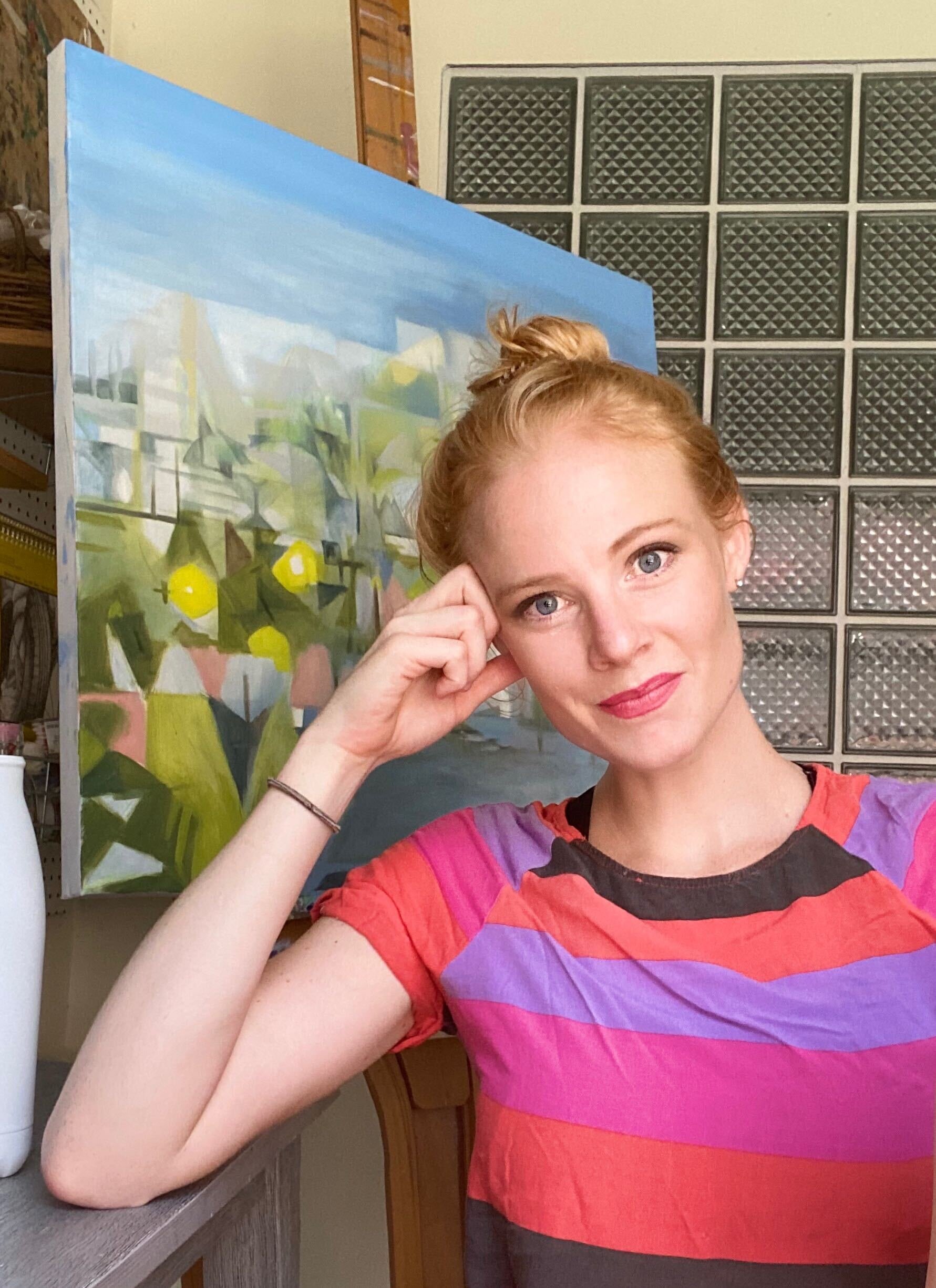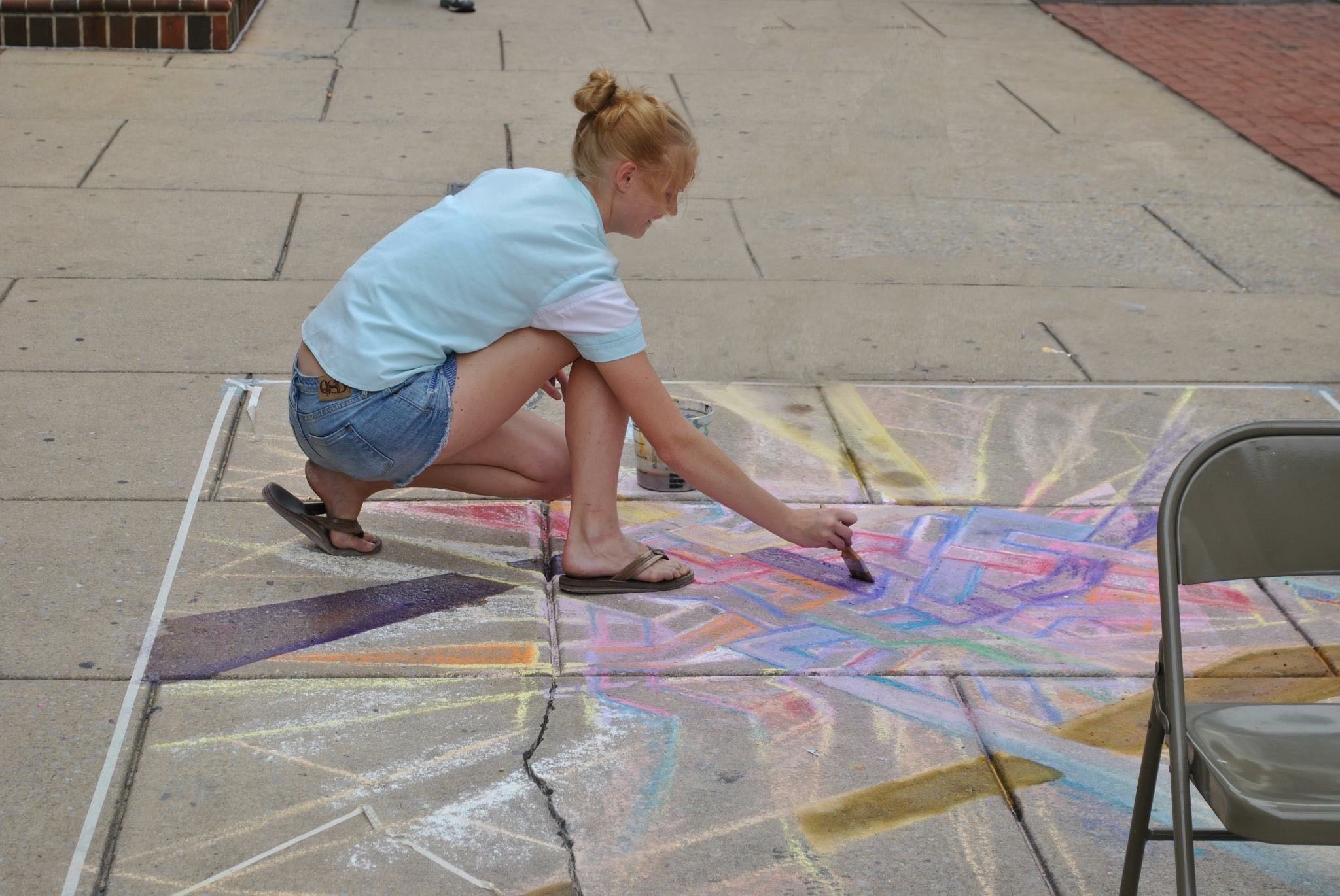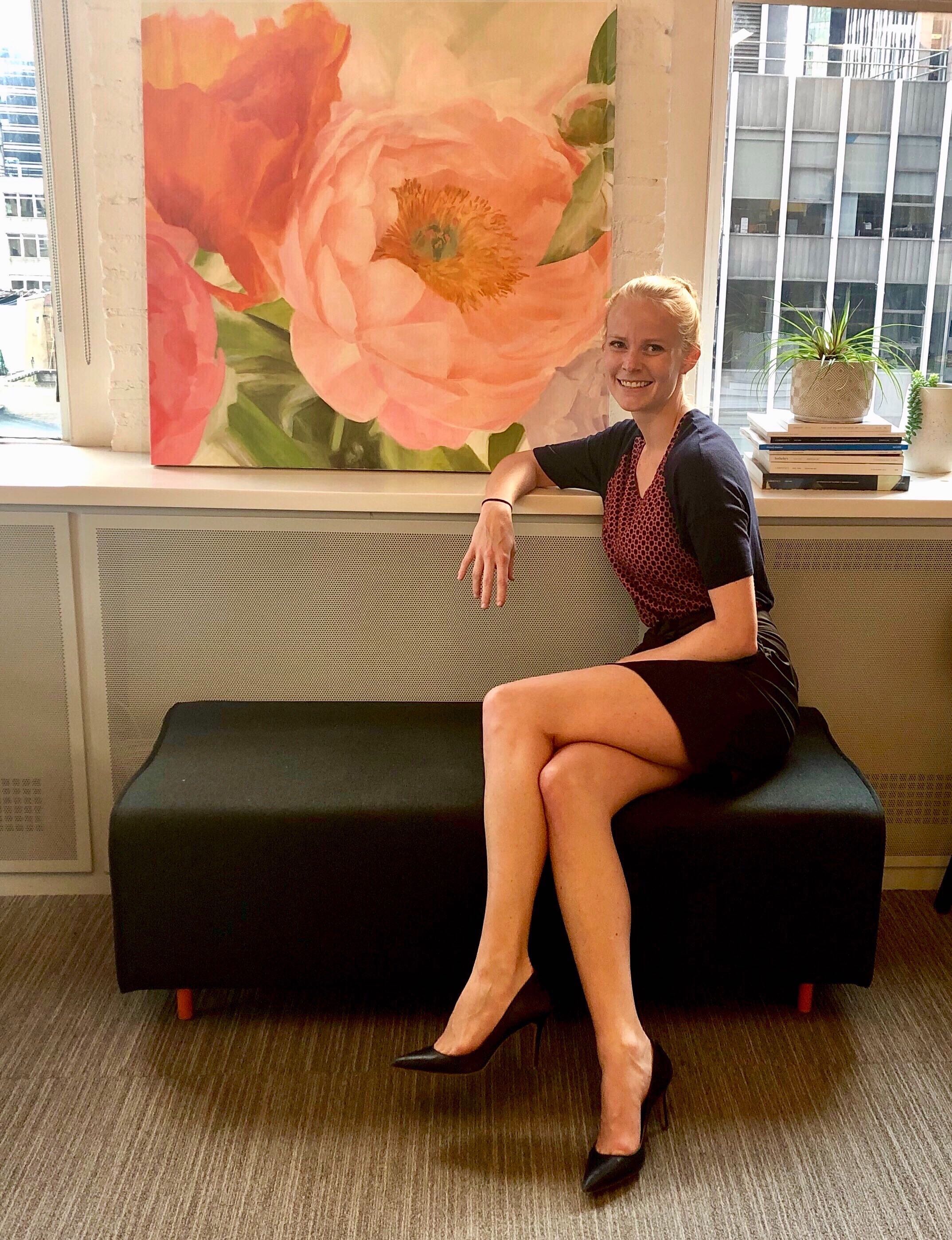About
Paraphrased from
“Sustaining Creativity In NYC”, 2019
by Fletcher Bonin (Read full Article HERE)
There are few people as enmeshed in the art world as Maggie Moran. Not only is she a digital experience manager at Christie’s Auction House in New York, she has also established herself as a painter in her own right. While a day’s work at Christie’s would be enough artistic fulfillment for most of us, Maggie paints every day after work for at least an hour.
Following her graduation from Lehigh University in 2011 Maggie was happily surprised to find some commercial success, selling several paintings. However after a dry spell during which none of her paintings were sold, Maggie pivoted into a gallery director position in York, Pennsylvania. There she “found an affinity for digital organization of people’s collections” that would suit her, not realizing that Christie’s loomed in her future.
Maggie eventually moved to NYC and took a sales job at a gallery in SoHO. There she quickly discovered that sales was not her passion. Shortly thereafter, Collectrium, a subsidiary of Christie’s, contacted her about a digital cataloging position, referencing her work back in Pennsylvania. Thrilled by the opportunity to reenter this realm of the art world, Maggie worked her way up from contracted employee at Collectrium to a full-time position in Christie’s emerging digital sector.
As for her own art, Maggie finds that having a career outside of the studio affords her the luxury of being able to paint what she’d like independent of critics or demand. She still sells her paintings, often by word of mouth, enjoying success despite the limited marketing she’s done for herself. That said, her work was recently shown in a gallery in New York. Furthermore, her paintings can be seen adorning the walls of the Christie’s offices on the 20th floor of Rockefeller Center .
You’ll likely notice her distinctive style replicated throughout three techniques. “The work I’m doing is pretty cyclical,” she explains – rotating between figurative, expressive, and experimental pieces. Generally, she is “moving towards applying traditional methods to abstract, non-traditional subject matter.” Closer inspection of this assertion proves revelatory, as all of Maggie’s work appears to be united by this cohesive effort.
Referring to her goals as an artist, Maggie asserts, “If I could paint all day, every day, for the rest of my life, I would.” The process and study of painting clearly enchants her as she compares painting to an “unsolvable math equation that you’re always just getting close to,” and that in painting, “there will always be something new to learn, something new to paint.” Maggie’s passion for painting is contagious, nearly inspiring me to drop the pen and pick up a brush.
Undoubtedly, certain vexations permeate both realms of the art world that Maggie occupies. When it comes to Christie’s, Maggie finds that often the “art world isn’t all about art,” and that art itself, at times, “has a certain amount of pretension.” She believes that “art should be accessible, at least in conversation, to as many people as possible.” As for the tribulations she’s experienced in her own foray into professional painting, she finds issues that are not dissimilar to the art world at large. It seems galleries oftentimes subtly imply that artists should be “selling yourself first and your art second.”
As Instagram followers and industry connections factor into curatorial visions, the system can be difficult to navigate. It would appear that galleries often fail to see their role in this pretension that the artwork itself so often seeks to subvert. In Maggie’s own words, “It’s not a blind tasting.” And yet the galleries are also an indispensable resource to the city’s artists; she hopes to find a gallery that’s a good fit for her work.
With New York functioning as the de facto mecca of the art world, the city often influences Maggie’s work. Since her arrival, she’s found “architectural elements in my work,” that weren’t there before, as well as “colors that have become more muted,” the respective results of the blue- gray, geometric architecture of the skyline. Almost every day, Maggie runs “along the Brooklyn pier overlooking Manhattan,” and certain “things I see have become focal points” in her paintings.
Maggie has a hard time choosing a favorite painting of hers, saying, “It depends on the day.” Eventually she decides on a piece entitled “The Storm,” which currently hangs in a bank in York, Pennsylvania. Of this piece, she says, “I didn’t have a concept when it started,” though painting it soon after hurricane Sandy nearly demolished her hometown, she recognized that the emotional elements of that loss appear in the painting itself. As for artists who inspire her, she is quick to rattle off several names, including Julie Mehretu, George Condo, Dana Schutz, Agnes Martin, Tony Cragg, Sonia Delaunay, and Umberto Boccioni. Lauding their originality, Maggie is moved by the paths these artists have blazed in an industry too often reliant upon tradition.
